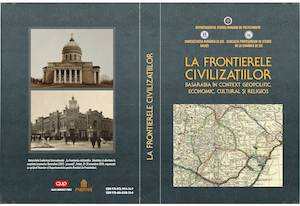
We kindly inform you that, as long as the subject affiliation of our 300.000+ articles is in progress, you might get unsufficient or no results on your third level or second level search. In this case, please broaden your search criteria.

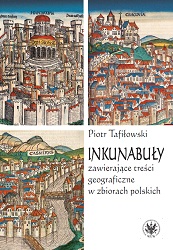
The book discusses the knowledge and popularity of geographical issues among the intellectual elites in the fifteenth-century Poland. This groundbreaking century, the Age of Discovery, also brought forth development of the revolutionary invention of Johannes Gutenberg – the mechanical movable type printing. Focusing on the mutual influences of these both factors, the author analyses the representation of the incunabula editions of the texts indirectly or directly referring to the knowledge on the Earth, preserved in the Polish book collections.
More...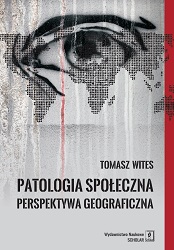
Praca jest swoistym kompendium wiedzy na temat istoty i badań zjawisk określanych mianem patologii społecznych. (…) Stanowi cenną pozycję w polskim piśmiennictwie geograficznym. Autor ujmuje problem patologii społecznej w sposób szeroki i wyczerpujący. Podejmuje próbę nie tylko zestawienia różnych perspektyw i ujęć badawczych, lecz także uporządkowania tego rozległego materiału.dr hab. Iwona Sagan, prof. UGKsiążka Tomasza Witesa wprowadza nowy wymiar teoretyczny i w tym sensie jest oryginalna i wnosi istotne wartości do rozwoju geografii. (…) Podjęty w niej problem patologii społecznej ma istotne znaczenie dla teorii i metodologii geografii, ma także znaczenie praktyczne. Autor postanowił osadzić problem zarówno w ujęciach obecnie już historycznych, jak i współcześnie dominujących.dr hab. Stanisław Mordwa, prof. UŁ Tomasz Wites – geograf, pracownik Wydziału Geografii i Studiów Regionalnych Uniwersytetu Warszawskiego, sekretarz Zarządu Głównego Polskiego Towarzystwa Geograficznego. Specjalizuje się w geografii człowieka. Autor książki Wyludnianie Syberii i rosyjskiego Dalekiego Wschodu (2007), stypendysta tygodnika „Polityka”, Fundacji na Rzecz Nauki Polskiej, laureat wielu innych nagród.
More...
The Silesian Foothills are characterized by the presence of diversified forest vegetation, represented by 16 associations and 14 phytocoenoses in the rank of the community. They are internally diversified into subassociations and variants, reaching a total of 42 vegetation units. (fragment of the summary)
More...
This is the first guide to Veliky Novgorod written in Polish. It offers a tour of about forty-five historical sites in the city and the surrounding area, arranged in a geographical order. These include the Novgorod Kremlin, St. Sophia Cathedral, the seat of the archbishops of Novgorod, Yaroslav’s Court, the Marketplace, houses of the Hansa League merchants, Rurikovo Gorodische. The reader will find here not only a coherent history of the city and of the political entity associated with it – the medieval merchant republic, but also a systematic presentation of the most significant topics related to Novgorod’s cultural and religious character, the independent development of which was shaped by the influence of the Byzantine civilization.Veliky Novgorod, one of many cities in the European part of contemporary Russia, located – as the iconic Polish singer and poet Jacek Kaczmarski put it – “among fields and marshlands,” is a real enigma. It has fascinated numerous artists and researchers for centuries, so much so that in the popular image of Veliky Novgorod, historical truth has become inseparably intertwined with myth. Even back in the Middle Ages, Veliky Novgorod ignited the imagination with its richness of a thriving trading hub which had been in contact with the Hanseatic League since the late twelfth century, and thus – for many centuries before the founding of St. Petersburg – a kind of Rus’ people’s window on Europe. The unique culture of the city on the Volkhov River, flourishing most fully from the 13th to the 15th century, and then brutally suppressed by Muscovite rulers, belies the stereotypical assumption which would perceive the Eastern Slavs as incapable of living in a democratic system. From the Preface
More...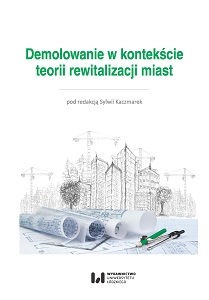
The publication presents the results of research concerning urban decay and its connection with the process of urban renewal.The authors proposed an original theoretical concept which was verified during field research carried out in 2016-2017 in seven European cities. They agreed that decay – understood as a multidimensional form of transformation that changes the spatial structure of a city, its urban layout, buildings, economy, community, culture, art – has been present in cities since the beginning of their foundation, and that it appears periodically.Factors initiating this phenomenon can be caused by forces of nature, human activity or both these elements at the same time or in succession. Urban renewal is a sequence of planned actions taken to revive inefficient and degraded areas of a city. Decay can be a cause for urban renewal, its tool or effect.An innovative view of urban renewal including urban decay not only allows for the existing theory of this process to be modified, but it also enables its modern application in the practice of urban planning and city management.
More...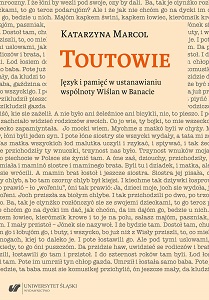
The monograph is devoted to the issue of collective memory of an ethnic minority living in the Ostojićevo village in the Serbian Banat, whose roots trace back to the town of Wisła, located in the Cieszyn County. The members of this community are the descendants of 19th-century labor migrants who mined and brewed saltpeter for the purposes of the Austrian army, moving within the borders of one country from the Austrian Silesia to the southern reaches of the Habsburg dominion. With time, Evangelical saltpeter brewers started to settle in Banat, where the local Hungarian community named the newcomers the Touts, a moniker which comes from the word Tōth, used to denote settlers from Slovakia. It is estimated that currently, the size of this community oscillates between 120 and 150 people.The publication aligns itself with research on the relationship between language, culture and society, underscoring the determining role of language in one’s perception of the world, interpretation of social and cultural phenomena as well as its function in consolidating communities. Linguistics of memory, adopted as the research perspective, aims to showcase the interdependence between language as a medium of memory as well as a means of its preservation, and between the culture of a particular language community and its discourses (including the discourses of memory) that shape collective identification. The monograph shows — in the context of the transformations in the Tout collective memory — the way in which the language code influences the shape of that memory, as well as the way in which language, as a memory-shaping tool, can also serve as a tool of shedding inherited trauma, which, in turn, results in a transformation of the group’s identity. Due to the numerous factors that influence language as a tool in the process of shaping the collective memory of the community, which, as a result, influences the way the members of that community identify, the analysis has been conducted within a very precisely defined social context, taking into account historical determinants that constitute the foundation of the current social and political situation of the Tout community, as well as the inter-ethnic relationships in the local community.To provide a background for the analysis of the social memory of the Touts, the monograph describes the linguistic and cultural conditions of the multiethnic community of Ostojićevo. It discusses the linguistic competence of the minority group, taking into account their social arrangement, which includes different spheres of life: the Vistula dialect is characteristic of the sphere of family life; Slovak is the domain of the religious sphere; Hungarian is used in contact with neighbors and colleagues; Serbian is the official language of education and media, while Polish is used when interacting with the citizens of Poland as well as the officials at the Polish Embassy in Belgrade. The description of cultural practices (on the example of wedding customs) as well as inter-ethnic relationships in the rural society, on the other hand, unveils the dynamics of the transformation of objective markers of identity and the functioning of cultural patterns in specific instances of contact with others, which result in partial assimilation of the Tout community with the majority groups. The description of the communicative memory of the Touts, passed down in narratives of the past from generation to generation constitutes a major part of the monograph. It discusses stories of the ancestors, recorded during ethnographic field research, which — next to denomination and language — shape the Tout community. Intergenerational transfer, which solidifies the ethos of the Tout Evangelicals, allows them to participate in the collective knowledge and memory, which constitute the foundation of constructing the awareness of collective belonging. Moreover, the monograph describes the process of folklorization of remembrance stories, which has emerged as a result of conventionalization and objectivization of intergenerational transfer.The current transformations of communicative memory into cultural memory result in changes in the ethnic identity of the Ostojićevo Vistulans from local to national—Polish. The internalization of a new collective memory based on the Polish national symbolic universe is the result of actions on the part of various institutions of power, understood as various institutions of public life. As a result, new ways of affirming the Polish national identity appear, including linguistic tools (poems and songs in Polish) and creating new places of memory (Polish House) or introducing ways to differentiate between us and them (costumes for Polish folk music groups). The monograph is supplemented by an analysis of the rhetoric of memory in media messages, including Serbian television and documentaries, which, as multimedia texts of culture, emerge as carriers of memory, playing a large role in the shaping of collective identity.Memory, which reveals itself in narratives and discourses about the past as one of the ways to categorize the world (owing to the collectively sanctioned selection of what should be remembered and what should be forgotten), constitutes the basis of inculturation and identity creation among the members of a community. It should be noted, moreover, that the further we reach with our memory, the more difficult it becomes to verify the memories against reality, and the easier it become to notice the influence of language and culture on the picture it paints. The observation of the transitional stage between communicative memory and cultural memory, which can be currently witnessed in the Ostojićevo Vistulan community allows us to witness the role of language (understood in the broader communicative and cultural context) in transformation of memory and the following changes in identification.
More...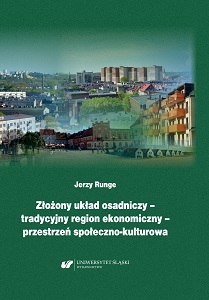
The first goal of the study is to outline the current state of knowledge of functional-spatial and socio-cultural transformations of complex settlement systems, especially the ones in traditional socio-economic regions. The second one is to propose several complementary model approaches (circular models of economic transformations and urbanization). The author's starting point is an attempt to model the origin and evolution of the economic base as a crucial element of the remaining changes in the socio-economic space. A model of economic change, like urbanization, is complementary to one another, reflecting both the centripetal and centrifugal forces conditioning transformation of the entire settlement system.
More...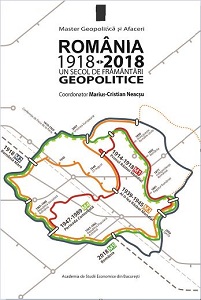
The volume entitled Romania 1918-2018. One century of geopolitical concerns (coordinated by Associated Professor Marius-Cristian Neacșu, PhD) is the fruit of the efforts and scientific research of the Geopolitics and Business Master Program, within the Bucharest University of Economic Studies, with the participation of both consecrated (professors) and early staged researchers (final year MA students), in a perfect symbiosis, on one hand by virtue of a noble ideal - the appearance in and under the auspices of ASE Bucharest in this important anniversary year, the Centenary of the Great Union (1918-2018) – and, on the other hand, as a proof of the Romanian higher education quality, through relevance, rigor and scientific accuracy of the information. Thus, the paper presents a particular interest, with regards to the subjects as well as its contribution to the understanding of the context and the geopolitical and geoeconomic Romanian framework, its dynamics over the last 100 years, with current implications on the regional and national business environment.The thematic area underlying this volume of studies and researches is Geohistory, Geopolitics and Geoeconomics, being structured in 15 studies, within three parts: Part I. The Centenary of Romania (1. The complicated geopolitical position of Romania, Marius-Cristian NEACȘU); Part II. One century of geopolitical concerns (2. Romania in World War I, Marian TUCĂ; 3. Nicolae Iorga and the Great Union. Geopolitical and geohistorical contributions, Clara NAE; 4. Romania between 1918 and 1944, Beatrice AVRAM; 5. The population of Romania in the interwar period, Bogdan ȚEBREAN; 6. The economy of Romania in the interwar period, Cătălin CONSTANTINESCU; 7. Romania during the communist regime, Roxana MATEI; 8. Romania after 1989, Laura-Iulia CIUPERCĂ; 9. Romania's relations with its neighbouring countries 1918-2018, Alina GHERGHINA, 10. Romanian-Russian relations 1918-2018, Marian TUCĂ); Part III. Geography and Geopolitics. The Romanian School (11. Simion Mehedinți, precursor of the Romanian school of geopolitics, Marius-Cristian NEACȘU; 12. Romania in the Romanian geopolitical studies in the first half of the 20th century, Silviu NEGUȚ, Marius-Cristian NEACȘU; 13. The contribution of Romanian geographers to the construction of modern Romania. Paris Peace Conference, 1919-1920, Marius-Cristian NEACȘU, Gheorghe VLĂSCEANU; 14. Simion Mehedinți, the great absent of Paris Peace Conference, 1919-1920, Marius-Cristian NEACȘU; 15. A long century of geography at Bucharest University of Economic Studies. The Master Program of Geopolitics and Business, Marius-Cristian NEACȘU).
More...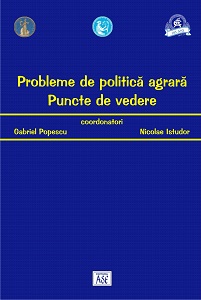
The volume "Agricultural Policy Issues. Points of view" brings together the opinions of specialists in the field, that reflects the current situation and the stage of evolution of the romanian agricultural sector, as well as the problems encountered in achieving and implementing the economic and productive legal framework of great interest for agriculture and its modernization. This book is a broad scientific event, which treats responsibly the defining segments of the economy and agricultural policy, with emphasis on issues related to the architecture of ownership and exploitation structures, property relations, involvement of the agricultural sector in association actions and cooperation under the influence of new modernization and development strategies subject to the area of scientific debate of the academic and university personalities present at the event. The present research focuses on the perimeter of economics and agricultural policy, addressing important strategy points, which capitalize on the scientific knowledge of specialists and decision-making bodies that forms the pyramid of romanian society, whose opinion completes a set of synergistic actions for efficiency and development of agriculture in Romania. The indisputable value of the scientific materials included in the volume can be recognized by the very essence of the debate – the involvement of the act of knowledge in finding solutions and opportunities for solving problems that affect the natural economic course of agriculture.
More...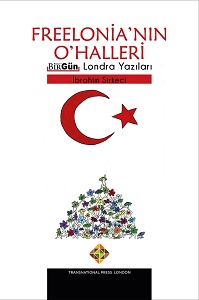
Freelonia’nın O’Halleri, BirGün Londra Yazıları 2008’den bu yana yayınlanmış haftalık yazılardan bir seçki. Bu seçkide Türkiye’de demokrasi, siyaset, seçimler ve özellikle sol siyasi partiler üzerine kaleme alınmış yazıları bir araya getirmeyi amaçladım. Yazılarımı takip edenlerin çok yabancılık çekmeyeceği “çakma” İngiliz hicvi dilime çok yerleştiği için bu derlemede de bolca karşınıza çıkacak.Bu kitabı okuduktan sonra hayatınız değişmeyecek. Öyle mutluluğun sırrı, demokrasinin yolu, on günde kilo verme, beş taşla zengin olma ve benzeri kısa yollar da sunmuyorum. Okurken yer yer yüzünüzde bir iki gülümsemeye ve içinizde hafif bir öfkeye yol açabilirsem benim için amaç hasıl olmuş demektir.Neden hemen her yazının sonunu “iyi pazarlar ve bol şanslar” veya “iyi haftalar ve bol şanslar” diyerek bağladığımı da açıklayayım. 2005 tarihli biyografik filmde ABD’li sunucu Edward Murrow haber programını her akşam “iyi geceler ve iyi şanslar” diyerek kapatıyordu. Filmi izlerken buna bayılmıştım. Bu temenninin 1950’lerin başındaki MacCarthy’ci baskı döneminde çok önemli olduğunu düşünüyorum. Bugün de farklı baskılar karşısında derdim hayatta istemediğimiz biçimde giden bunca çok şey varken şansın rolünü de hatırlamak. O yüzden şimdiden iyi okumalar ve bol şanslar.
More...
The book describes successive stages of Poland’s geological history: from accretion of the crystalline basement nearly 2 billion years ago to recent times and the near future. Present geological structure of the country is shown as the result of overlapping processes and events, using earlier tectonic patterns and structures. Historical phases are discussed against the current chronostratigraphy, in the continental and partly even global context. The author refers to the results of latest geophysical and geological research.
More...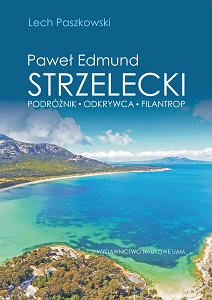
Na książkę Paweł Edmund Strzelecki. Podróżnik - odkrywca - filantrop składa się dwadzieścia jeden rozdziałów ułożonych chronologicznie. Pierwsze opowiadają o dzieciństwie i młodości, o podróżach Pawła Edmunda po kraju (czyli Polsce pod zaborami), potem do obu Ameryk i Wysp Oceanii. W 1839 roku przenosimy się do Australii i wreszcie w 1843 znów do Europy (Anglia, Irlandia). Tu wielce zaskakuje opowieść o sławnym podróżniku, który podejmuje się misji humanitarnej w Irlandii. Wcześnie osierocony, całym sercem oddał się ratowaniu od śmierci głodowej ponad dwustu tysięcy irlandzkich dzieci. Na koniec pełna niespodzianek, jakże kolorowa opowieść o mało znanym okresie życia sir Strzeleckiego w Londynie wśród arystokratów, ministrów, magnatów. Opromieniony sławą zakończył swój żywot w 1873 roku.
More...
The monograph contains the results of research devoted to determining the vulnerability of passenger road transport in Poland by identifying the nature and scale of changes in transport accessibility and changes in the network traffic load in the event of a flood (with different probabilities of occurrence), conducted under the project number 2018/29/B/HS4/01020, financed by the National Science Center in Poland. In the course of the implementation of such formulated main goal of the study, an attempt was made to achieve a group of specific objectives of a cognitive, methodological and application character. The research was conducted mainly on the basis of data on the extent of flood risk areas in Poland and their development, as well as the road network and the development of its neighborhood. The publication may be of interest to researchers dealing with the geography of transport or - more broadly - with socio-economic geography and spatial management. It can also be helpful material for students of study programs that relate to the geography of transport, transport accessibility or spatial mobility in their curriculum. The content of the thesis covers issues that can be used by specialists in crisis management or road infrastructure management in crisis situations related to the occurrence of a flood.
More...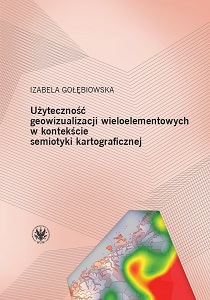
The work presents study on coordinated and multiple views (CMV) geovisualisation tools, i.e., interactive tools consisting of several views presenting spatial data in various forms, including maps. The study covers both theoretical considerations and eye-tracking empirical study. Among other things, the author aimed to explore how inexperienced users learn and work with CMV geovisualization tools. On this basis, guidelines were formulated for CMV designers and authors of training materials supporting these tools.
More...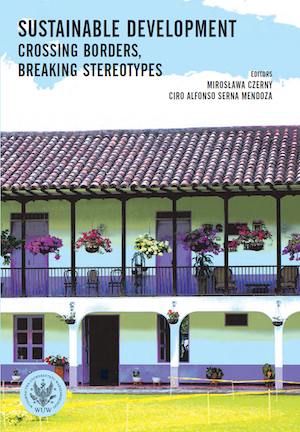
In Poland and in Latin American countries socio-economic development has large environmental costs. The ruling elites, in the name of economic growth, do not care enough to follow the recommendations for such resource management as to reduce all types of pollution and emissions harmful to humans and the environment. The societies themselves are also not fully aware of these changes. This publication is a continuation of the topics discussed in earlier monographs, which were the result of joint research of Polish and Latin American geographers within many projects dedicated to urban issues. It is the second of the two volumes published in 2021 and contains texts presenting new case studies and new ideas about sustainable development, risk and local development in Poland, Colombia and other Latin American countries. Thousands of pages have already been written on sustainable development. However, the subject is still relevant. Processes occurring in the environment, especially the climate change, only emphasize the need for further research and discussion on the subject. In this monograph we return to the issue of understanding and implementing the idea of sustainable development in Poland and Latin America. We also join the discussion on sustainable urban development and governance. Finally, by presenting a few examples, we address the issue of the conflicting nature of sustainable development policies in some countries and regions. The book also introduces the reader to the issue of education on sustainable development. As part of the cooperation of Polish and Latin American geographers academics of the Faculty of Geography and Regional Studies of Warsaw University have been lecturers at doctoral studies in urban and regional sustainable development and post-doctoral studies in Earth and Environmental Science at the University of Manizales in Colombia (Doctorado en Desarrollo Sostenible y Posdoctorado en Ciencias de la Tierra y el Medio Ambiente). Doctoral students and lecturers from the University of Manizales have visited Poland many times in joint symposia and workshops. In 2017 a Polish-Colombian monograph in Spanish was published in Colombia and in 2018 two scientific monographs, both in Spanish and English, were brought out by the University of Warsaw Press. This volume is the second of the two published in 2021 and contains only English texts on sustainable development, risk and local development in Poland, Colombia and some other Latin American countries.
More...
The author discusses the appearance, evolution, relationships and biology of Mesozoic mammals. She reconstructs the early stages of development and differentiation of Mesozoic mammals in the period of the domination of dinosaurs. The author describes methods of palaeontological research, search expeditions and presents profiles of palaeontologists discovering and documenting fossils. The book includes figures depicting the anatomy of Mesozoic mammals and photographs.
More...
The work presents the results of research on the relations between assemblages of carpologicalremains and contemporary vegetation in four small water reservoirs. The main aimof the conducted research was to determine to what extent the assemblages of carpologicalremains preserved in the top layer of bottom sediment of the presently growing vegetationand which factors have crucial influence on the formation of taphocenoses. The author hasbeen trying to answer the following questions: 1. Can the anthropogenic water reservoirsconstitute model objects for the examination of the processes that result in the formationof floral taphocenoses of macroremains? 2. To what extent does the species composition ofassemblages of carpological remains reflect the species composition of the presently growingvegetation? 3. Does the amount of diaspores of particular species found in sedimentspecimens reflect the ratio of their amount/overlay in the contemporary phytocoenoses or, atleast does the number of diasporas reflect the domination of particular species in individualgroups? 4. Which factors determine the arrangement and number of carpological remainsin small and shallow water reservoirs?
More...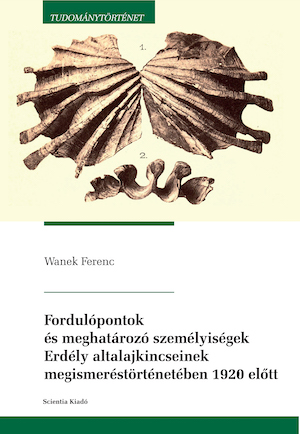
This volume is an attempt to paint a picture of the history of natural resources and mining in Transylvania, through a few selected examples arranged in a chronological order, up to the point in time mentioned in the title. It relies on a scientific approach, but also tries to give an account that is easy to read and understand.Some of the chapters identify the locations of medieval mines that were known from documents but had no precise geographic positions; others call the attention to the fact that, taking into account their characteristics, some modern-day mines were also active during medieval times. The book guides the reader through the adventurous history of learning about the geology of energy resources (natural gas, coal) in Transylvania. In the process of doing that, it also highlights ideas and concepts that were introduced here for the first time in the history of science, such as the industrial use of natural gas, pioneering research on single-celled fossils, and the clarification of stratigraphic controversies through the use of paleontology. The effect of the scientific, economic, societal, and political context on the exploration and exploitation of raw materials – and mineral waters as well – is also discussed.By describing the work of a few outstanding Transylvanian geologists (e.g., Franz Herbich, Gyula Halaváts, and Mór Pálfy), we also highlight that, despite all the difficulties of doing scientific work in a small and often disadvantaged country, thanks to these scientists, this region was able to keep up with, or even lead, the scientific advances in Europe and the rest of the world. In some cases we also discuss their contributions in areas outside of the geosciences.By summarizing and cataloguing those publications of these researchers that are relevant to Transylvania, we also hope to aid further studies in the history of geoscience in this region.
More...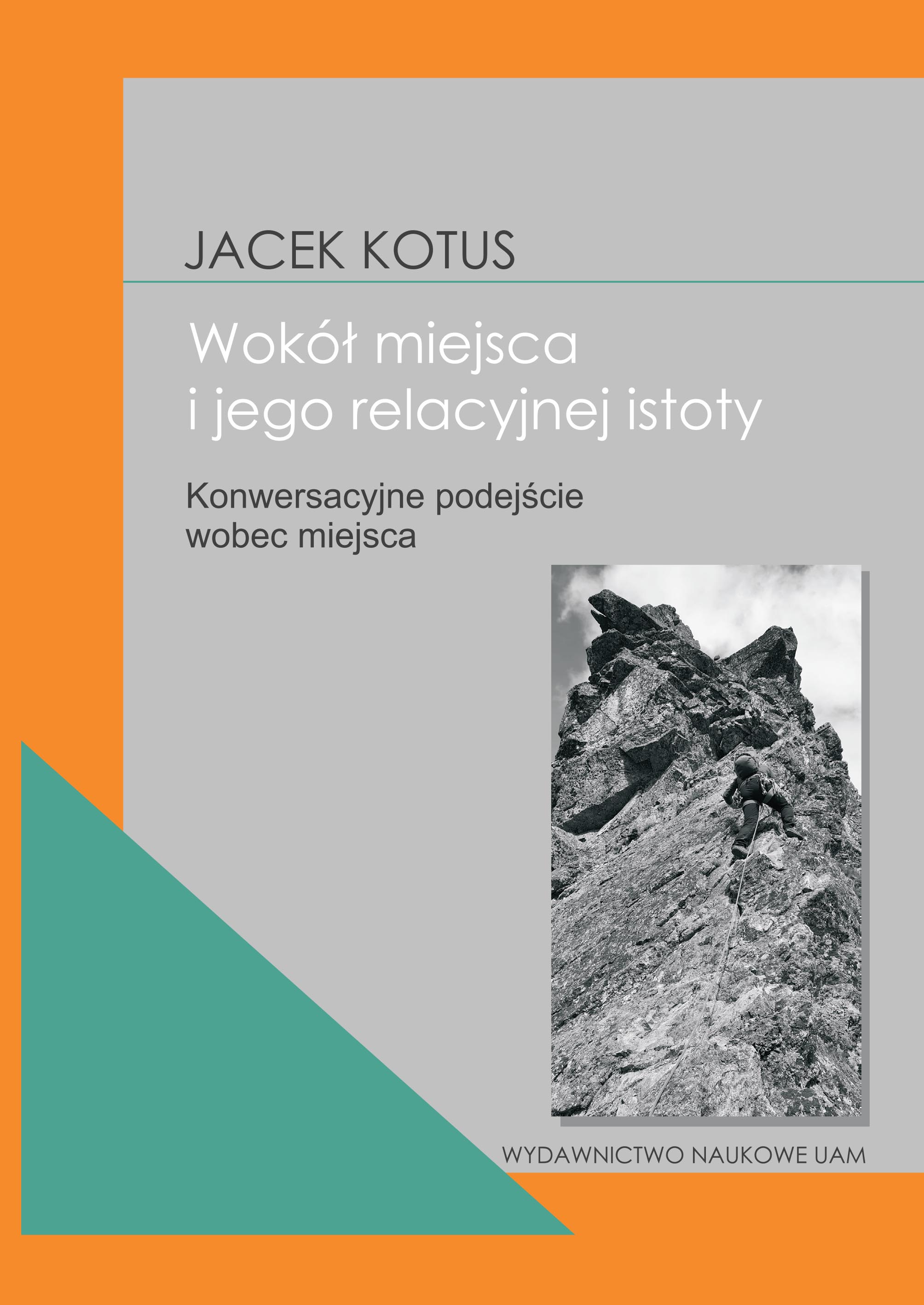
The book deals with the fundamental category of place. The author points out that contemporary discussions on the essence of place go beyond the human-oriented approach. Geographers take up the themes of place agency, self of place, and the dialogue between human and place. By developing this narrative and using the relational approach's assumptions, the author develops a conversational approach to place. The book proposes a theoretical framework and shows case studies in the author's interpretation of the dialogue with place. These considerations are preceded by a discussion of the basic scientific paradigms that make up the assumptions of the conversational narrative of the essence of place, and a presentation of selected views existing so far on the concept of place.
More...